‘I was looking at Cézanne along Matisse’s lines and along comes this painting’, explained Bridget Riley of Lagoon 2, a large, airy canvas from 1997 that hangs near the end of her exhibition at the De La Warr Pavilion. Their influence is subtle – I doubt any artist’s example, however important to her, could derail Riley’s unmistakeable personal vision – but identifiable. I, for one, saw echoes of Cézanne in the palette (an adaptation of the warm pinks, greens and receding blues that characterised his landscapes) and Matisse’s cut-outs in her clean-edged composition.
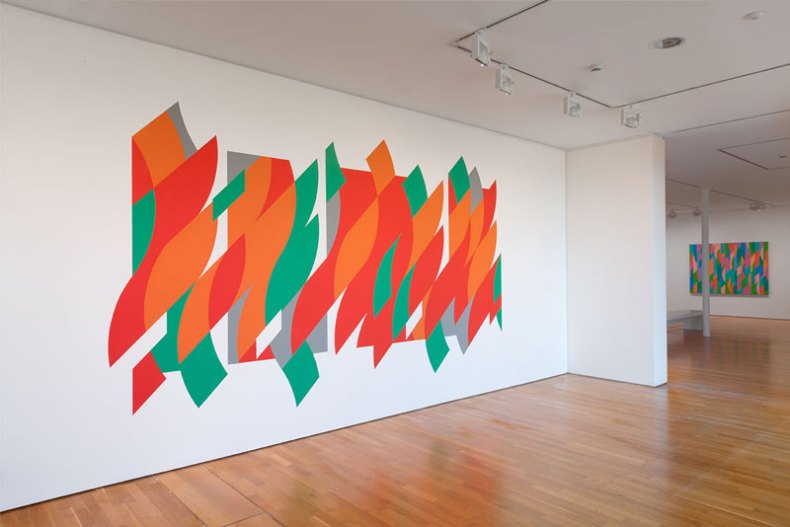
‘Bridget Riley: The Curve Paintings, 1961-2014’ (installation view: from left, ‘Rajasthan’, ‘Lagoon 2’) © Bridget Riley 2015, all rights reserved. Courtesy Karsten Schubert
So began Riley’s impromptu exhibition tour, delivered to a gaggle of journalists shortly before its opening earlier this summer, which took in not just the history of her own curve paintings but a substantial chunk of art history, too. From Matisse she turned her attention to Mondrian, whose abstractions taught her ‘to start with the thing itself’, then to Monet’s expansive water lilies, then to the Futurists (‘There’s lots I don’t like about Futurism…but it was certainly moving towards abstract painting’). Later, casting further and wider, she pulled in Japanese prints, Indian miniature painting (one of the most impressive compositions in the show, painted directly onto the gallery wall, is named Rajasthan), and ancient Egyptian tombs, whose carefully integrated decorative schemes inspired her approach to a set of hospital murals. Asked about the inherent appeal of the curve, the abstract artist turned unexpectedly to a discussion of life drawing and contrapposto: ‘Like a frozen movement, one side is protracted, the other relaxed’, she explained, acting it out. ‘A kind of embrace.’ Her studio practice, in which assistants produce finished works after Riley’s designs, feels decidedly Old Master-ish.
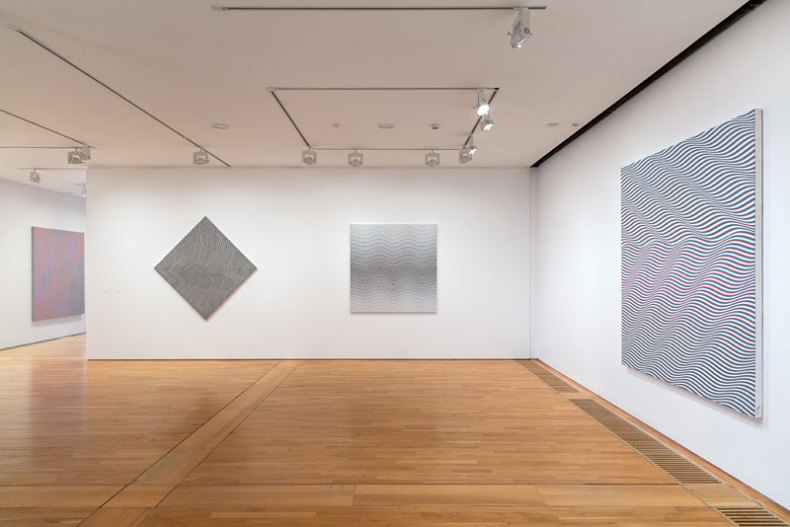
‘Bridget Riley: The Curve Paintings, 1961-2014’ (installation view) © Bridget Riley 2015, all rights reserved. Courtesy Karsten Schubert
It’s no surprise, of course, that a great artist like Bridget Riley should be inspired by other great artists. She’s notoriously well versed in art history. But her wide-ranging references do cast an interesting light over the DLWP show. Riley’s early curve paintings from the 1960s, which open the exhibition, shook traditional conceptions of art almost literally: their disorientating contour lines are too much for the eyes and brain to process, so that they genuinely seem to vibrate and undulate on the wall. Hailed as the psychedelic expression of a new generation, these Op Art experiments shot Riley to fame as one of the art world’s radical young breakaways. But in her telling of it, they represented an earnest extension of almost a century of modernist thought, which since the Impressionist era had been slowly unpacking painting’s most basic elements and showing them to the world. ‘I looked at Matisse and thought, “how did he get there?”’ she said of her student days. Matisse could suggest a whole room with nothing more than a plane of pure red paint – and now here was another way of doing something similar, of jolting the viewer out of complacency and facing up to the trickery of art and vision.
At the end of the 1970s, Riley abandoned curve paintings for almost two decades, which means this show jumps rather suddenly from the vertigo-inducing early works to her more expansive, lyrical later style. These works are composed of intersecting planes and are easier to take in: they shift, but don’t unsettle. It’s as if, having exposed art’s tricks all those years ago, she now invites us to indulge in them. ‘Stay there otherwise it won’t come towards you’, she said of one work, before drawing out the details of its choreography with expressive sweeps of her own arm. One plane comes forwards, another recedes; colours complement and oppose each other; vertical edges steady the more flyaway curves and diagonals.
One artist she doesn’t mention in her tour, but whose influence seems undeniable, is Seurat. His obsessive investigations into the effects (visual and psychological) of colour and line echo Riley’s own, and both of them knew instinctively that meticulous composition could be just as expressive as a more virtuoso handling of paint. But then Riley has a whole other show in which to explore that particular history: their works will be paired at the Courtauld Gallery this September.
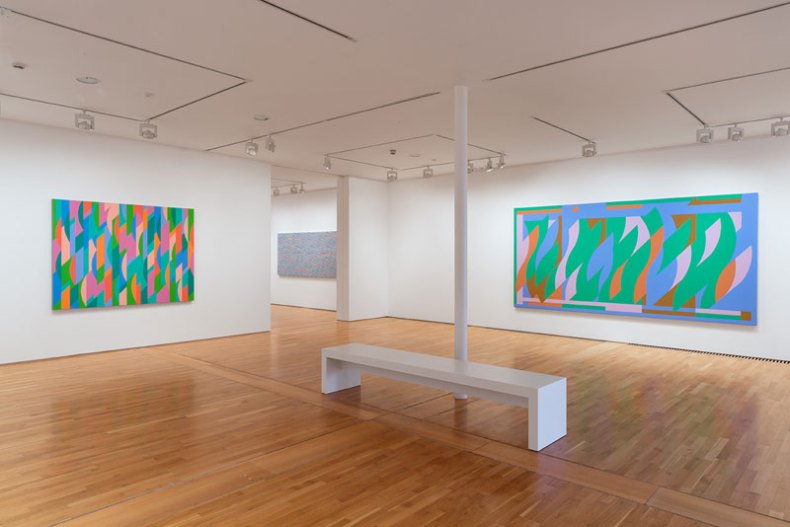
‘Bridget Riley: The Curve Paintings, 1961-2014’ (installation view: from left, ‘Lagoon 2’, ‘Streak 2’, ‘Blue (La Réserve)’) © Bridget Riley 2015, all rights reserved. Courtesy Karsten Schubert
‘Bridget Riley: The Curve Paintings, 1961–2014’ is at the De La Warr Pavilion, East Sussex, until 6 September.
Unlimited access from just $16 every 3 months
Subscribe to get unlimited and exclusive access to the top art stories, interviews and exhibition reviews.

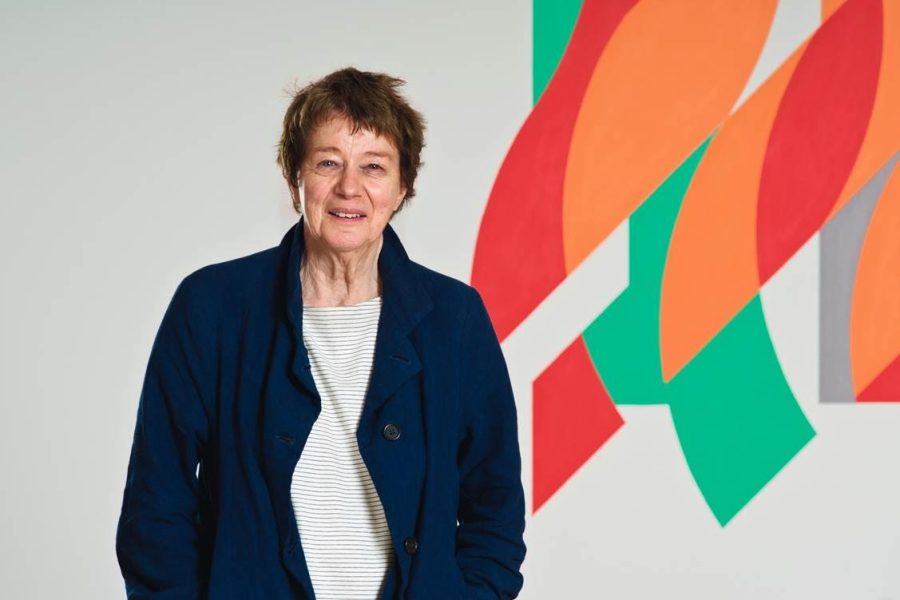

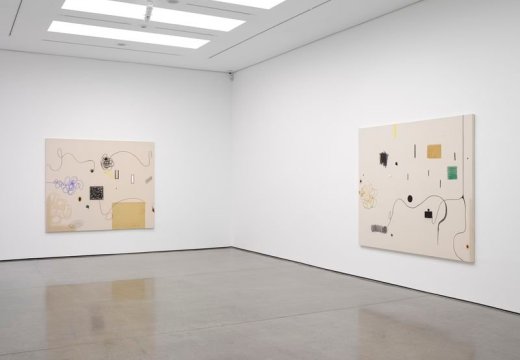
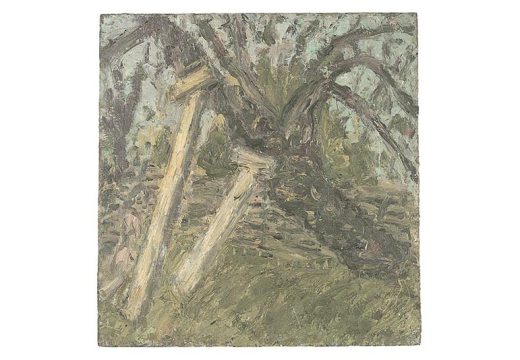









![Masterpiece [Re]discovery 2022. Photo: Ben Fisher Photography, courtesy of Masterpiece London](http://www.apollo-magazine.com/wp-content/uploads/2022/07/MPL2022_4263.jpg)
Why are fathers so absent from art history?